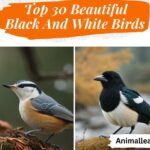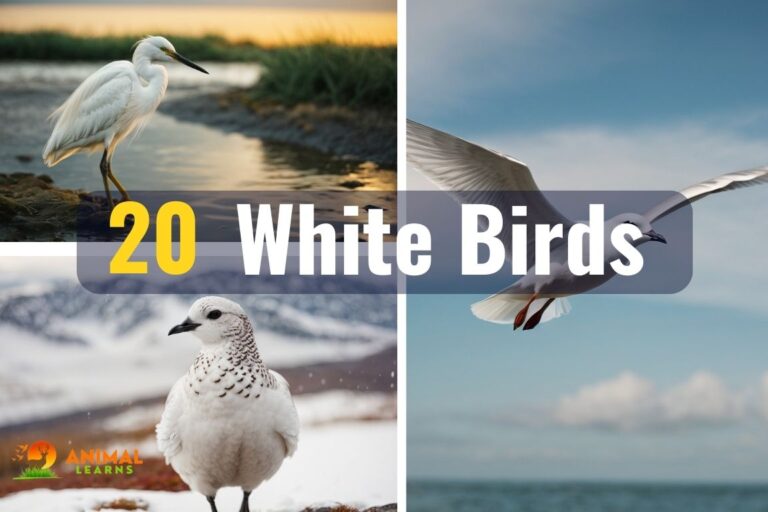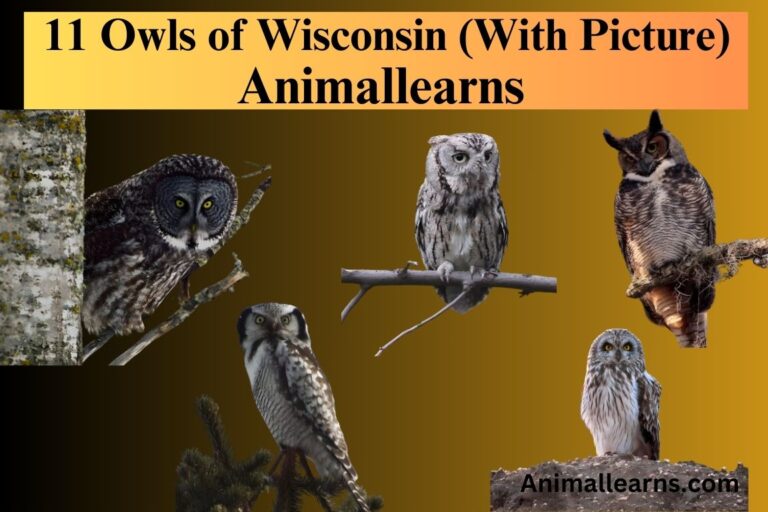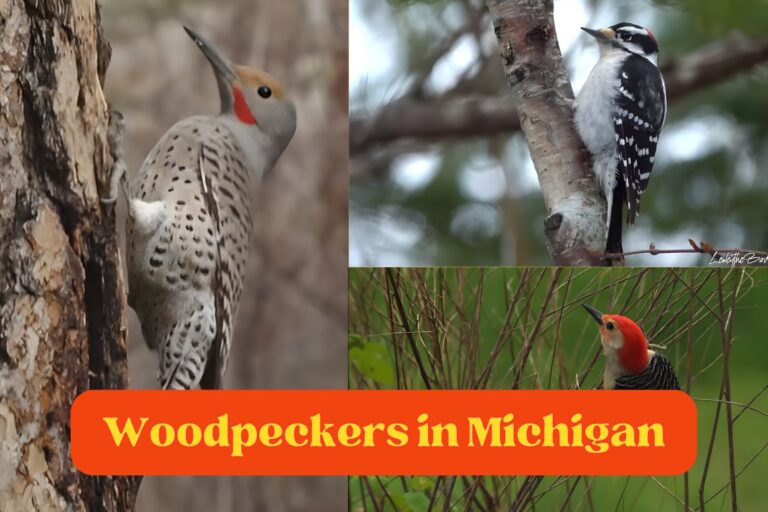Top 15 Amazing Birds With Long Beaks

Birds with long beaks are capable of obtaining sustenance from a variety of substrates in wetland habitats. Bird beaks provide important information about a bird’s diet and lifestyle. Cardinals, with their robust, conical bills, can crack nuts and seeds, indicating how dependent they are on these foods.
On the other hand, birds of prey often use hooked bills to tear apart carnivorous prey, whereas some species have short, sharp bills that indicate they eat insects. In contrast, birds with long, dagger-like bills expertly probe and impale prey like fish or amphibians.
In nature, long-beaked birds showcase a stunning array of colors, ranging from vibrant yellow, purple and lush green to deep blue, fiery orange, and contrasting black and white feathers.
An elongated bill is used by nectar-feeding birds to extract sweetness from flowers, while a perching bird uses an extended bill as a flexible extension pole to grab fruits and insects. It is important to note that avian beak forms demonstrate intricate adaptations tailored to specific ecological niches, providing insights into the size, diet, habitat, and ecological role of birds.
Exploring the Diversity of Birds with Long Beaks
Contents
- 1 Exploring the Diversity of Birds with Long Beaks
- 2 Birds With Long Beaks
- 2.1 Sword-billed Hummingbird
- 2.2 Long-billed Curlew
- 2.3 American Woodcock
- 2.4 Keel-billed Toucan
- 2.5 Black Skimmer
- 2.6 Eurasian Curlew
- 2.7 Common Snipe
- 2.8 Roseate Spoonbill
- 2.9 Northern Jacana
- 2.10 Australian Pelican
- 2.11 Long-billed Dowitcher
- 2.12 Black-crowned Night Heron
- 2.13 Common Oystercatcher
- 2.14 Atlantic Puffin
- 2.15 Yellow-billed Spoonbill
- 3 Unveiling the Secrets of Birds with Long Beaks
- 4 FAQs
The avian kingdom boasts an array of fascinating species characterized by their distinctive beak morphology. Small birds with long beaks, such as the Long-billed Dowitcher, demonstrate the exquisite adaptation of form to function.
These diminutive marvels delicately wield their elongated bills, navigating mudflats and shallow waters in search of nourishment. Pictures of birds with long beaks capture the intricate elegance of these small creatures, showcasing the evolutionary marvel of their slender feeding apparatus.
On the other end of the spectrum, the realm of North American birds introduces us to the enigmatic black bird with a long beak, a figure possibly embodied by the Common Raven or American Crow.
This imposing creature, with its sizable and intimidating beak, adds a touch of the ominous to the avian landscape, illustrating the diverse roles that long beaks play in both the delicate and the daunting dimensions of bird life.
Birds With Long Beaks
- Sword-billed Hummingbird
- Long-billed Curlew
- American Woodcock
- Keel-billed Toucan
- Black Skimmer
- Eurasian Curlew
- Common Snipe
- Roseate Spoonbill
- Northern Jacana
- Australian Pelican
- Long-billed Dowitcher
- Black-crowned Night Heron
- Common Oystercatcher
- Atlantic Puffin
- Yellow-billed Spoonbill
Sword-billed Hummingbird
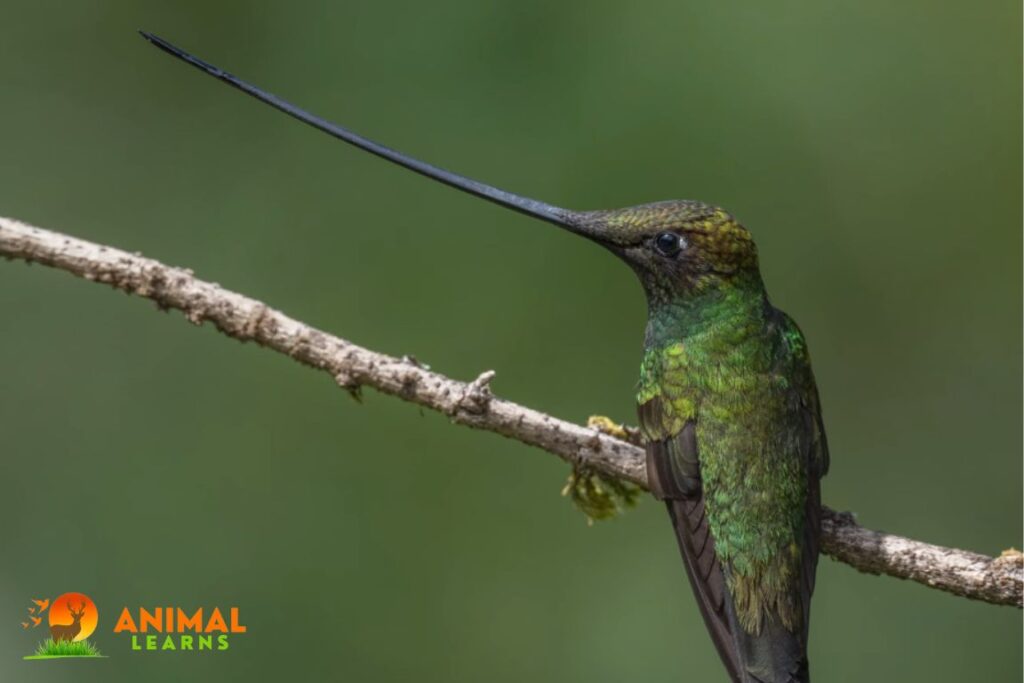
| Attribute | Information |
| Scientific Name | Ensifera ensifera |
| Size | 8-11 cm |
| Weight | 5-10 grams |
| Color | Green, iridescent |
| Diet | Nectar from long-tubed flowers |
| Location | Andes Mountains, South America |
| Flying Speed | Up to 25 mph |
| Lifespan | 5-7 years |
Avian evolutionary tapestry has revealed an array of beak adaptations that reflect the intricate interplay between form and function within the realm of avian evolution. As a paragon of nature’s creativity, the sword-billed hummingbird (Ensifera ensifera) stands out among these remarkable specimens.
With an elongated bill that extends beyond its body length, this avian marvel can reach deep into tubular flowers, grabbing nectar with unparalleled precision. Evolution will go to profound lengths to fill ecological niches, as evidenced by such specialized adaptations.
Long-billed Curlew

| Attribute | Information |
| Scientific Name | Numenius americanus |
| Size | 50-65 cm |
| Weight | 500-900 grams |
| Color | Brown, buff, white |
| Diet | Invertebrates, small crustaceans |
| Location | North America, coastal areas |
| Flying Speed | Not well-documented, moderate |
| Lifespan | 6-10 years |
Long-billed Curlews (Numenius americanus) emerge as masters of adaptation on sprawling grasslands and shorelines. They navigate mudflats and tidal zones with unparalleled finesse with their long beaks, which rival the length of their bodies.
With a remarkable method of probing and extracting invertebrate prey, the Long-billed Curlew represents the elegance of anatomical specialization in response to environmental demands.
American Woodcock

| Attribute | Information |
| Scientific Name | Scolopax minor |
| Size | 26-30 cm |
| Weight | 200-350 grams |
| Color | Brown, mottled |
| Diet | Earthworms, insects |
| Location | North America, woodlands |
| Flying Speed | Slow, agile flight |
| Lifespan | 5 years |
With its long, sensitive bill, the American Woodcock (Scolopax minor) takes center stage on the forest floor in the dim twilight. A crepuscular wonder, this bird probes soft soil for earthworms and insects with its extended beak. This exemplifies how the bird’s foraging behavior and anatomical design are balanced.
Keel-billed Toucan
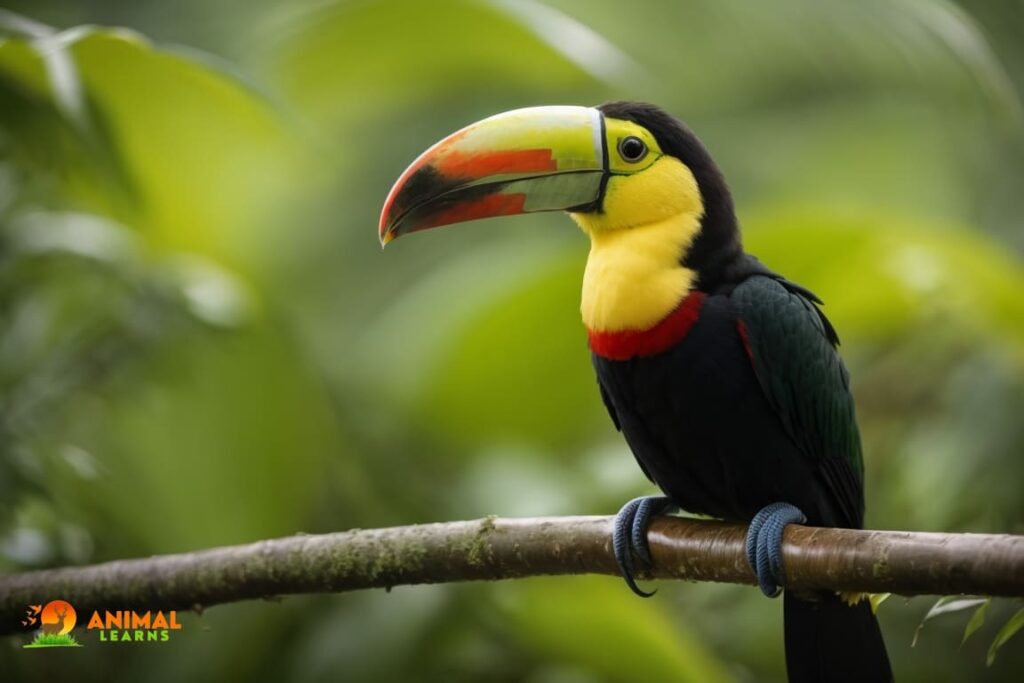
| Attribute | Information |
| Scientific Name | Ramphastos sulfuratus |
| Size | 42-55 cm |
| Weight | 380-750 grams |
| Color | Black, blue, yellow, green |
| Diet | Fruits, insects, small reptiles |
| Location | Central and South America |
| Flying Speed | Agile, not well-documented |
| Lifespan | 15-20 years |
With its distinctive, oversized bill, the Keel-billed Toucan (Ramphastos sulfuratus) commands attention as it traverses tropical lands. This iconic beak serves as both a thermal regulator and a means of manipulating a diverse diet of fruits and prey, with its vibrant kaleidoscope of colors. Adapting to tropical ecosystems, this arboreal acrobat represents nature’s ingenuity.
Black Skimmer
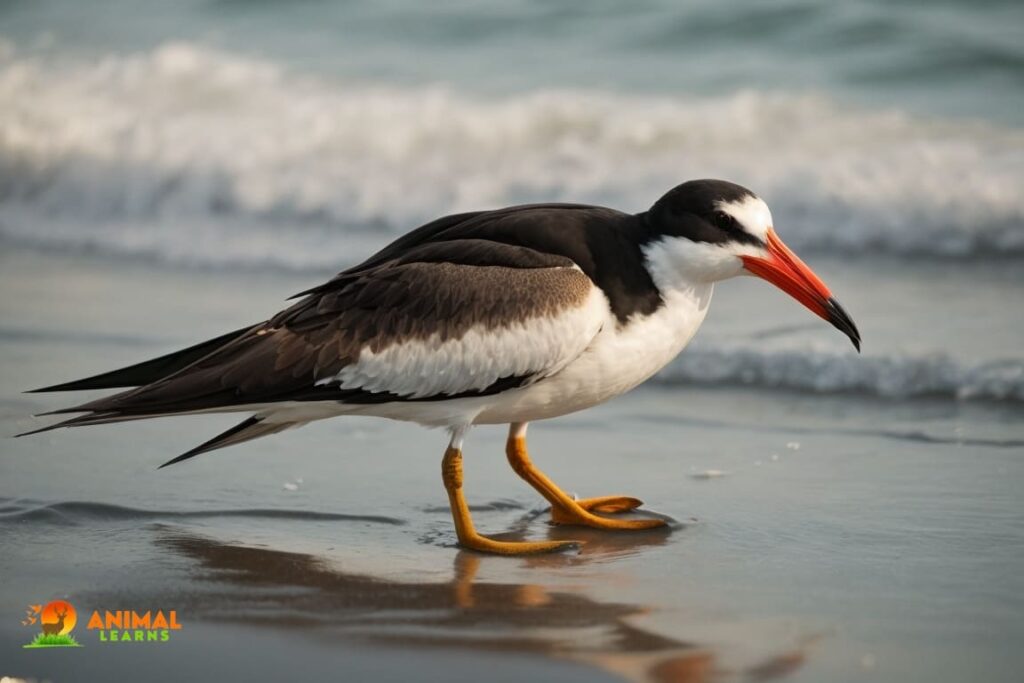
| Attribute | Information |
| Scientific Name | Rynchops niger |
| Size | 40-50 cm |
| Weight | 200-400 grams |
| Color | Black, white, orange |
| Diet | Small fish, crustaceans |
| Location | Americas, coastal areas |
| Flying Speed | 25-40 mph |
| Lifespan | 10-20 years |
In addition to its unique beak structure, the Black Skimmer (Rynchops niger) is also a proficient piscivore at the interface of air and sea.
As a testament to the profound adaptability of avian anatomy, the Black Skimmer gracefully skims the water’s surface, securing a swimming pool bounty with surgical precision.
Eurasian Curlew
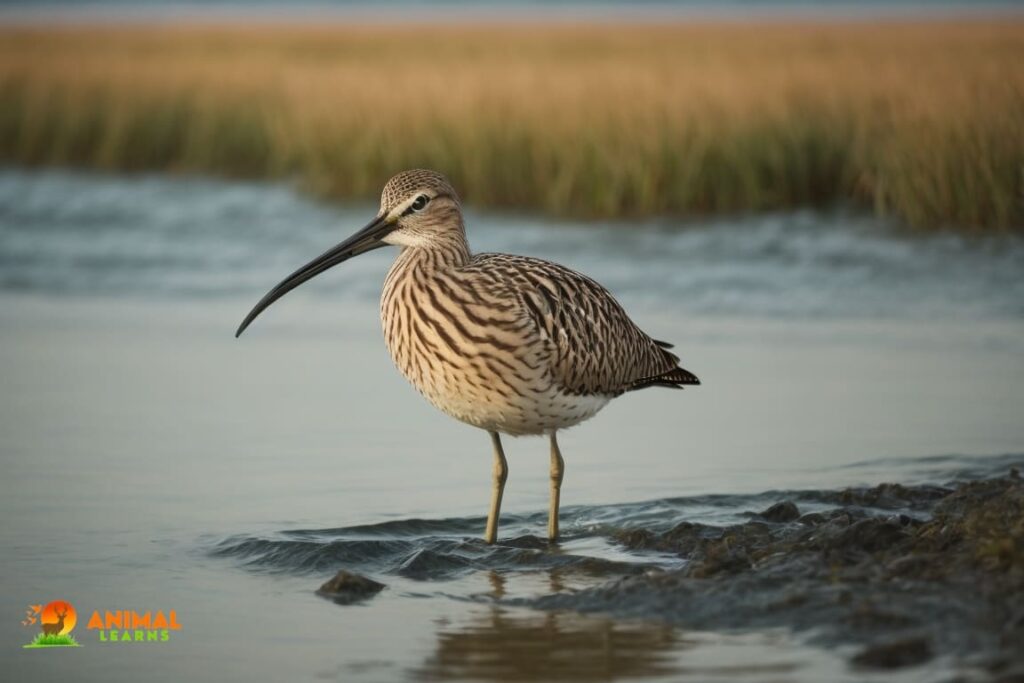
| Attribute | Information |
| Scientific Name | Numenius arquata |
| Size | 50-60 cm |
| Weight | 500-1100 grams |
| Color | Brown, streaked |
| Diet | Invertebrates, small fish |
| Location | Europe, Asia, Africa |
| Flying Speed | Moderate, 30-40 mph |
| Lifespan | 15-25 years |
It is clear that convergent evolution has been at its best when the Eurasian Curlew (Numenius arquata) and Common Snipe (Gallinago gallinago) travel across hemispheres.
In mud or soft substrates, these shorebirds extract invertebrate prey with unparalleled efficiency with their long, probing bills. They navigate their respective wetland habitats adeptly.
Common Snipe
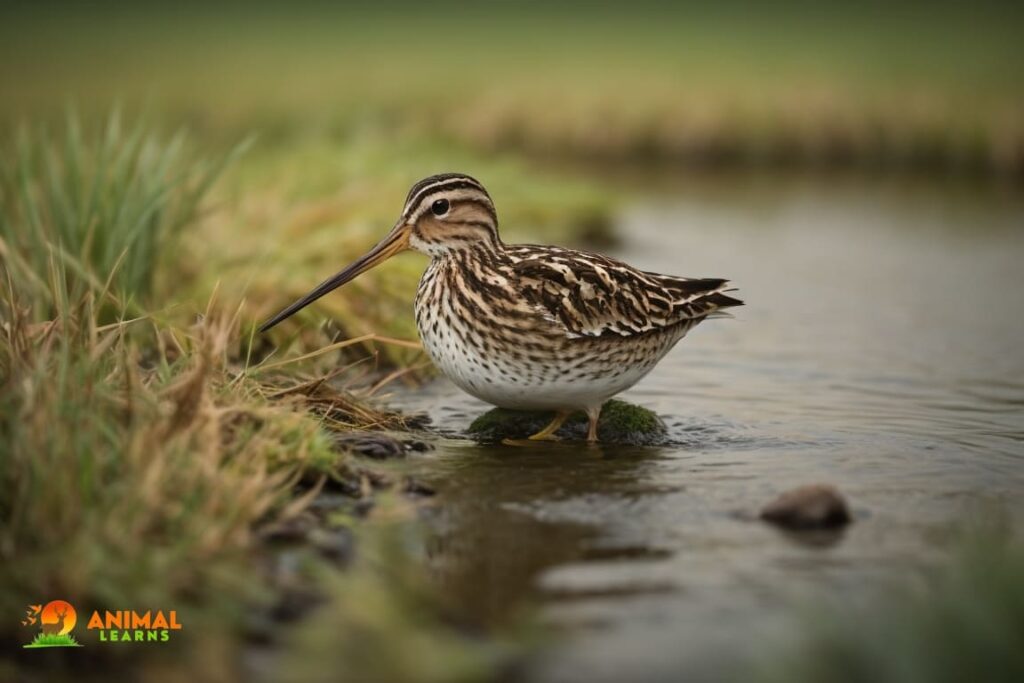
| Attribute | Information |
| Scientific Name | Gallinago gallinago |
| Size | 25-27 cm |
| Weight | 80-140 grams |
| Color | Brown, cryptic plumage |
| Diet | Invertebrates, worms |
| Location | Worldwide, wetlands |
| Flying Speed | Fast and erratic |
| Lifespan | 2-3 years |
The Common Snipe, recognized for its cryptic plumage and particularly notable among birds with long beaks, excels at foraging for invertebrates in the marshy landscapes it inhabits.
In the Northern Hemisphere, the Common Snipe is a widely distributed bird species that inhabits a variety of habitats. The Common Snipe is found throughout Europe, Asia, and North America. Wetlands, marshes, bogs, and damp meadows are among its habitats.
A winter migration occurs in parts of southern Europe, Asia, and coastal areas of North America, when they migrate to milder climates during the breeding season. Both Old World and New World regions benefit from their flexible habitat preferences and migratory patterns.
Roseate Spoonbill

| Attribute | Information |
| Scientific Name | Platalea ajaja |
| Size | 71-86 cm |
| Weight | 1.2-1.8 kg |
| Color | Pink, white |
| Diet | Fish, crustaceans, insects |
| Location | Americas, coastal areas |
| Flying Speed | Not well-documented |
| Lifespan | 10-15 years |
In the realm of wading elegance, the Roseate Spoonbill (Platalea ajaja) unfolds as a vision of avian grace. With its spatula-shaped bill, it can teach small fish, crustaceans, and aquatic invertebrates in shallow waters. Within the world of birds, this specialized beak represents the perfect marriage between form and function.
Northern Jacana

| Attribute | Information |
| Scientific Name | Jacana spinosa |
| Size | 23-28 cm |
| Weight | 80-120 grams |
| Color | Black, white, yellow |
| Diet | Insects, small invertebrates |
| Location | Americas, freshwater habitats |
| Flying Speed | Not well-documented |
| Lifespan | 5-8 years |
In a delicate and nimble foraging behavior that befits its delicate and nimble nature, the Northern Jacana (Jacana spinosa) steps lightly across lily pads and emergent vegetation.
Using its beak, this marshland resident plucks insects and small invertebrates from the surface of the water, demonstrating the diversity of avian adaptations among terrestrial and aquatic ecosystems.
Australian Pelican
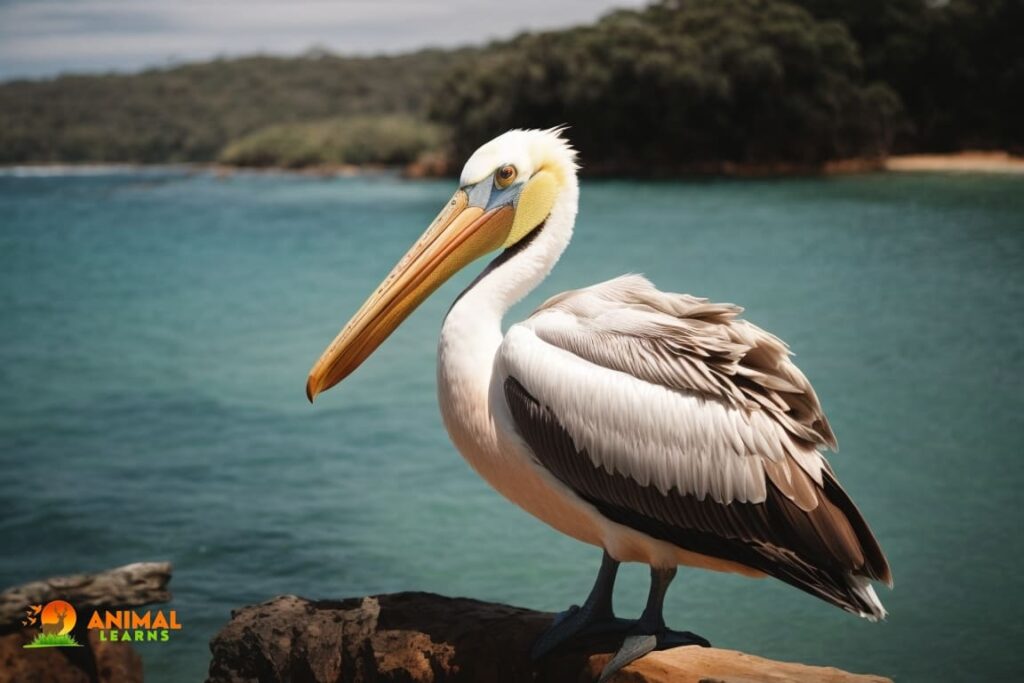
| Attribute | Information |
| Scientific Name | Pelecanus conspicillatus |
| Size | 1.6-1.9 m |
| Weight | 4-13 kg |
| Color | White, black |
| Diet | Fish, crustaceans |
| Location | Australia, coastal areas |
| Flying Speed | 56-64 km/h (35-40 mph) |
| Lifespan | 10-25 years |
The Australian Pelican (Pelecanus conspicillatus) completes this avian odyssey with its formidable, long bill flying through the skies and waterways.
The Australian Pelican, known for its distinctive appearance among birds with long beaks, boasts an impressive bill, perfectly adapted for capturing a diverse array of aquatic prey.
An ideal example of efficient foraging within expansive aquatic landscapes, this piscivorous giant uses its extended mandible to catch fish and other aquatic prey.
Long-billed Dowitcher
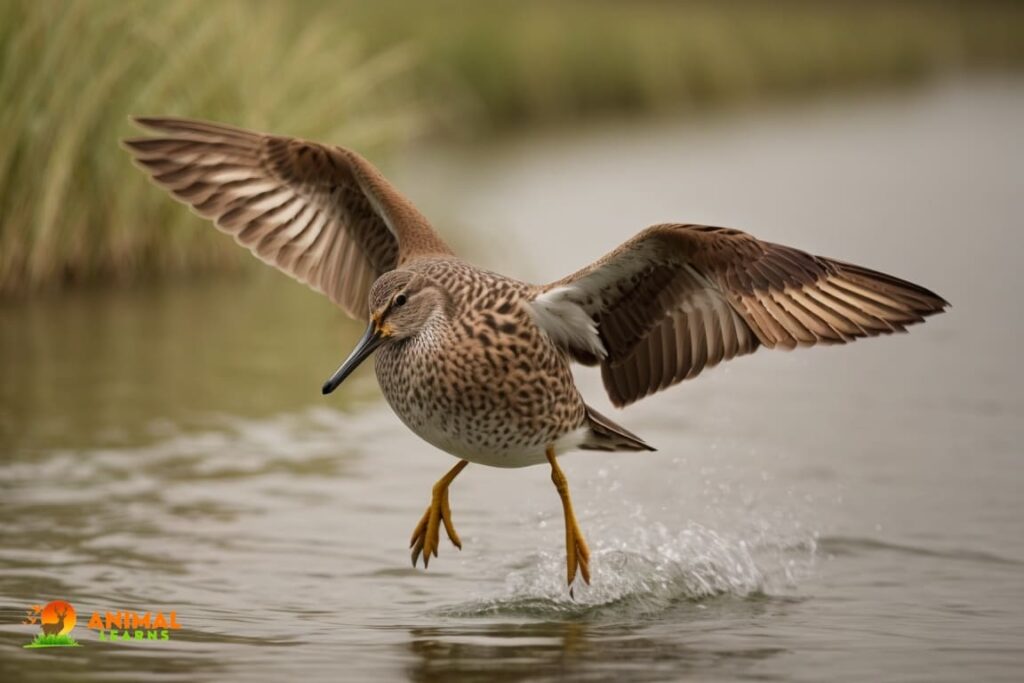
| Attribute | Information |
| Scientific Name | Limnodromus scolopaceus |
| Size | 28-32 cm |
| Weight | 90-200 grams |
| Color | Brown, mottled |
| Diet | Insects, small crustaceans |
| Location | North America, wetlands |
| Flying Speed | Not well-documented |
| Lifespan | 5-10 years |
As a testament to the fascinating adaptations observed within avian taxa, the Long-billed Dowitcher stands out for its distinctive elongated beak. In addition to its prodigious length, Limnodromus scolopaceus has an exquisite beak designed for probing mudflats looking for invertebrate prey.
By using its long bill to extract worms, crustaceans, and mollusks from soft substrates, this avian virtuoso demonstrates the evolutionary precision of its feeding mechanism.
Black-crowned Night Heron
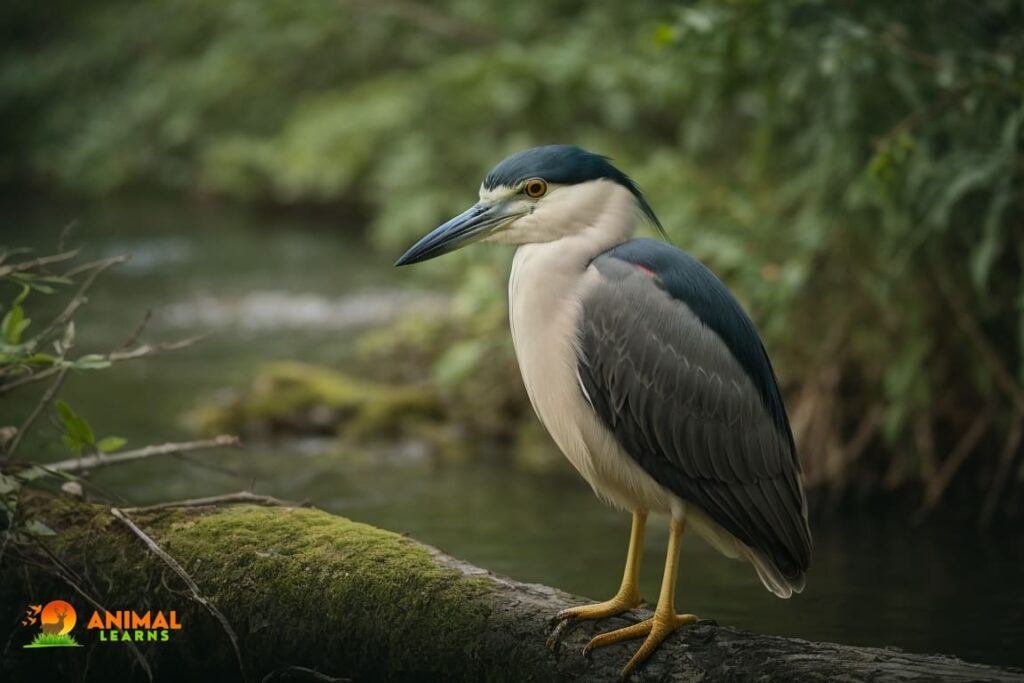
| Attribute | Information |
| Scientific Name | Nycticorax nycticorax |
| Size | 58-66 cm |
| Weight | 625-1100 grams |
| Color | Black, gray, white |
| Diet | Fish, crustaceans, insects |
| Location | Worldwide, wetlands |
| Flying Speed | Not well-documented |
| Lifespan | 15-20 years |
Black-crowned Night Herons are captivating examples of avian species with formidable beaks designed for stealthy predation in the shadowy realms of wetlands and nocturnal landscapes.
Despite its relatively robust, dagger-like beak, Nycticorax nycticorax is capable of efficiently capturing fish, amphibians, and even small mammals in the shadow of darkness. As a crepuscular predator, the night heron’s long beak is a testament to its skill.
Common Oystercatcher
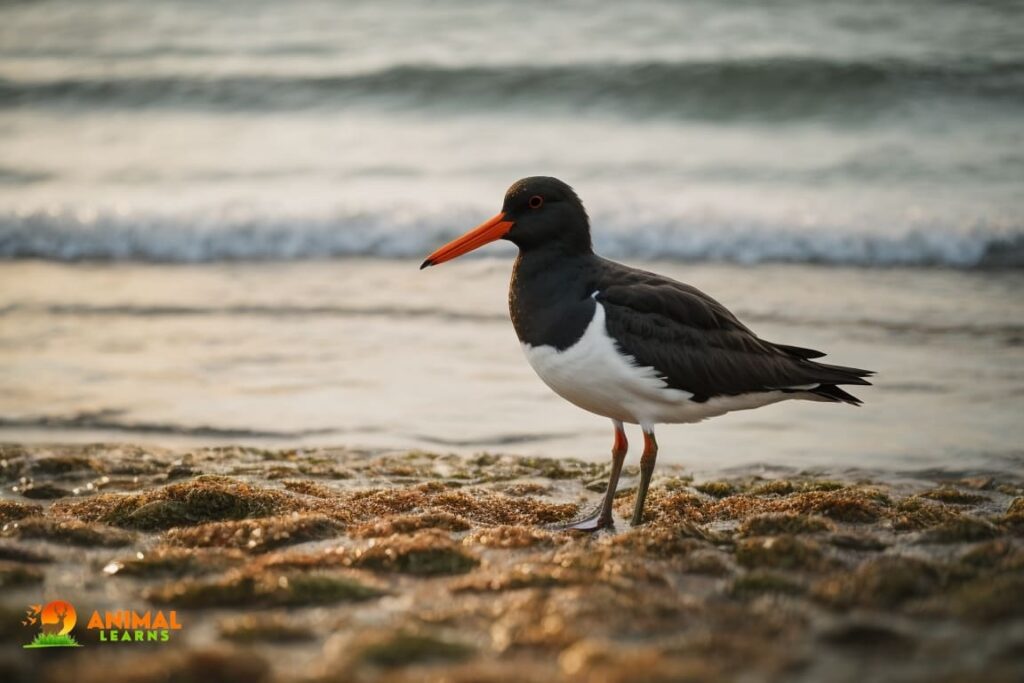
| Attribute | Information |
| Scientific Name | Haematopus ostralegus |
| Size | 40-45 cm |
| Weight | 400-800 grams |
| Color | Black, white, brown |
| Diet | Shellfish, worms |
| Location | Worldwide, coastal areas |
| Flying Speed | Not well-documented |
| Lifespan | 20-25 years |
Known scientifically as Haematopus ostralegus, the Common Oystercatcher travels to coastal areas and has a large, robust beak that is specifically designed for opening shellfish.
In order to expel molluscan morsels from their protective encasements, this avian artisan uses its elongated, chisel-shaped bill with finesse. Its beak, a tool of remarkable precision, reflects the intricate ecological specialization of avian lineages.
Atlantic Puffin
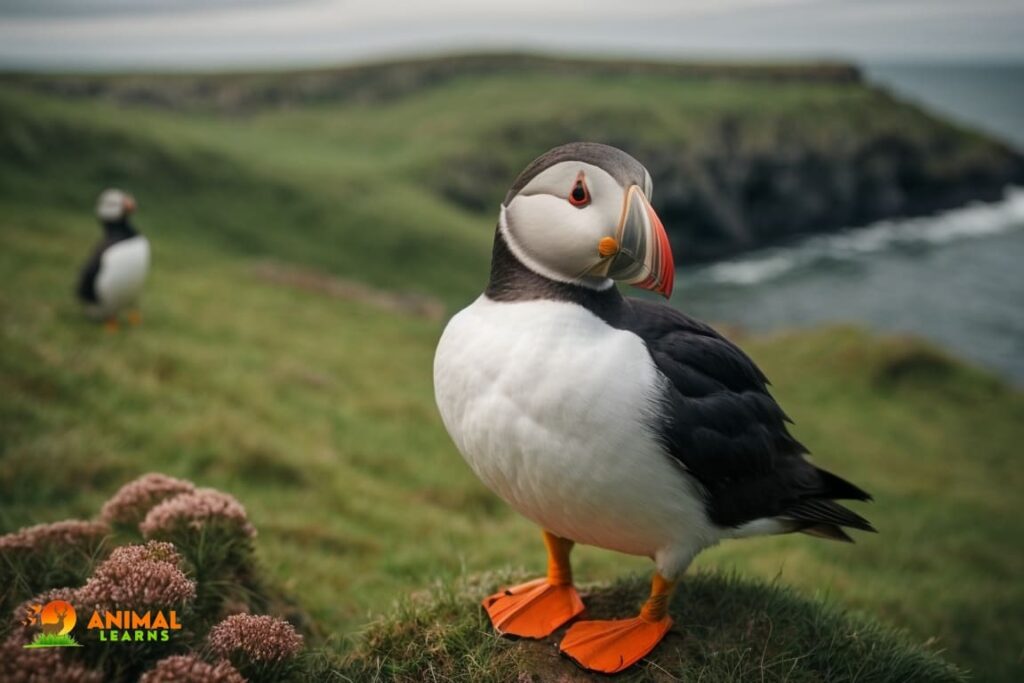
| Attribute | Information |
| Scientific Name | Fratercula arctica |
| Size | 28-34 cm |
| Weight | 300-500 grams |
| Color | Black, white, orange |
| Diet | Fish, crustaceans |
| Location | North Atlantic, coastal cliffs |
| Flying Speed | 55-70 km/h (34-44 mph) |
| Lifespan | 20 years |
With its charming appearance and distinctive beak, the Atlantic Puffin, scientifically known as Fratercula arctica, is one of the charismatic seabirds. Its elongated, brightly colored bill serves multiple purposes, resembling a parrot’s beak.
The beak plays a dual role in avian communication and survival, facilitating the capture of small fish during foraging expeditions, as well as in courtship displays.
Yellow-billed Spoonbill

| Attribute | Information |
| Scientific Name | Platalea flavipes |
| Size | 70-90 cm |
| Weight | 1.2-2 kg |
| Color | White, yellow |
| Diet | Fish, crustaceans, insects |
| Location | Australia, New Zealand |
| Flying Speed | Not well-documented |
| Lifespan | 15-20 years |
In addition, the Yellow-billed Spoonbill, Platalea flavipes, has a distinctive spoon-shaped beak that sweeps through shallow waters while searching for aquatic invertebrates. It epitomizes elegance and adaptability with its slim, elongated bill.
In the vast avian tapestry, the spoonbill’s beak exemplifies the intricate coevolutionary dance between form and function, embodying the refinement of specialized feeding strategies.
Unveiling the Secrets of Birds with Long Beaks
As we delve into the realm of birds with long beaks, a multitude of questions arise, reflecting our innate curiosity about these remarkable creatures. What is the name of the bird with the long beak that graces the wetlands? In India, which kind of bird showcases a gracefully long beak, seamlessly adapted to its unique environment?
As we venture into larger avian realms, which big bird captures our attention with its long sharp beak, marking its presence in the intricate tapestry of the bird kingdom? The array of birds with long beaks, from the small to the large, beckons us to explore the intricacies of their lives and the evolutionary marvels that have shaped their diverse forms.
The journey through this avian inquiry unveils the richness of the natural world, where each question sparks a fascinating exploration into the lives of birds with long beaks, each species holding its own story within the vast narrative of nature.
FAQs
Why do some birds, like the Sword-billed Hummingbird, have exceptionally long beaks?
Birds like the Sword-billed Hummingbird have evolved long beaks to access nectar from specific long-tubed flowers, showcasing a specialized feeding strategy.
What is the purpose of the long bill of the Long-billed Curlew?
The Long-billed Curlew’s extended bill is adapted for probing deep into the soil, allowing it to feed on invertebrates and small crustaceans in coastal areas.
How does the Black Skimmer use its long beak for feeding?
The Black Skimmer’s long, orange bill, with its lower mandible longer than the upper, is employed to “skim” the water’s surface, capturing small fish and crustaceans with precision.
Why does the Roseate Spoonbill have a spoon-shaped bill?
The Roseate Spoonbill’s spoon-shaped bill is a specialized adaptation for filter-feeding. It sweeps through the water to capture fish, crustaceans, and insects.
What is the significance of the Australian Pelican’s long bill and throat pouch?
The Australian Pelican’s long bill and expansive throat pouch are versatile tools for capturing a variety of prey, making it an efficient hunter in aquatic environments.





